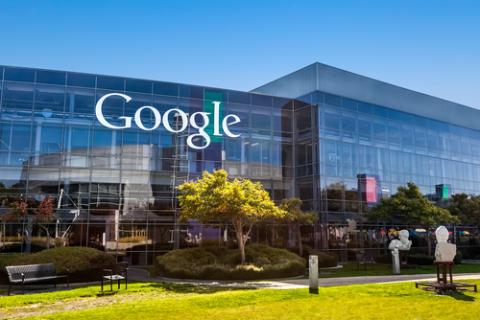Giving more than 100 percent is usually in the lexicon of athletes and motivational speakers. Rarely is such a thing reality or a long-term sustainable goal for no-nonsense business planners.
And yet Google has already achieved its goal of buying clean energy to offset all of its electricity consumption globally (although it does not divulge energy consumption nor how much it pays for it except in its annual environmental reports). The Internet giant and one of the nation’s largest publicly traded companies (through parent Alphabet) has made long-term renewable power purchase agreements (PPA) a long-term priority and added recent deals in places as disparate as Taiwan and Tennessee.
“It underscores that renewable energy makes business sense,” said Michael Terrell, head of energy market development at Google. “There’s a number of things attractive about renewables, besides the low carbon part of it. Prices are coming down to historic lows, and it makes sense from a price perspective.”
Since 2010—one year after Google began focusing intently on the value of long-term, fixed-price PPAs for renewable energy—the company has signed to offset the cost of more than 30 solar and wind projects across the Americas and Europe. Google now touts itself as the largest corporate purchaser of renewable energy.

Michael Terrell
A deal announced lin the past week makes Asia its fourth continent in the Google clean energy portfolio. It signed a long-term deal to purchase the output of a 10-MW solar array in Tainan City, Taiwan.
The Taiwanese deal follows other recent long-term, offset deals, including earlier this month when Google announced it would power two new data centers with 413 MW from Tennessee and Alabama solar farms.
Google is building data centers in Clarksville, Tennessee, and Jackson County, Alabama. The company plans to match 72 percent of the facilities’ hourly electricity use with carbon-free sources, supporting its goal of sourcing carbon-free electricity around the clock.
Google’s energy head Terrell said the company exceeded its overall goal of 100 percent renewable energy last year and is now looking to crack some of the toughest markets for renewables, whether it’s southeast Asia or red-state America and beyond.
“And we’re going to every corner of the globe,” said Terrell, a native Alabaman.
Google-Alphabet was hardly alone in the rise of the corporate clean energy PPA. A report from the Business Renewables Center of the Rocky Mountain Institute indicated that the combination of corporate PPAs, green tariffs and outright ownership of renewable assets by companies reached an all-time high of 6.43 GW in the U.S. last year.
The companies putting their money into new energy economy run the gamut of industries. Facebook, AT&T, ExxonMobil, Microsoft and Johnson & Johnson are only a few of those finding pricing stability and meeting carbon-reduction goals in long-term clean energy PPAs.
BloombergNEF (BNEF) found in its recent Corporate Energy Market Outlook released today that that some 13.4 GW of clean energy contracts were signed by 121 corporations in 21 different countries in 2018. This was up from 6.1 GW in 2017, and positions companies alongside utilities as the biggest buyers of clean energy globally.
“Don’t just listen to us,” Terrell said.
Google cut its first green tariff deal with Duke Energy in 2013. It’s also joined with Target and others to finance 177 MW of solar in the Georgia Power territory in April 2018.
The skies the limit when it comes to wind and solar PPAs on the long-term, fixed price corporate PPA level, Terrell predicted.
“We think every company who wants to have renewable energy should have a direct path to buying it…a direct path to the developer or directly to the utility,” he said. “Should be 100,000 companies doing PPAs.”
Of course, buying energy offsets may pay for getting renewable projects financed, but it’s not the same thing as direct consumption of renewable energy. Even passionate supporters of corporate PPAs acknowledge that clean energy has major transmission roadblocks getting energy from less populated sunny and windy areas to the demand centers closer to the U.S. coasts.
The market needs to continue to evolve and build scale to make it economical for all of those things, the Google energy head acknowledged.
“I don’t profess to have all the answers,” Terrell said. “I do think it’s part of the broader picture we need to be planning to get renewables in greater scale in all of these markets.”





